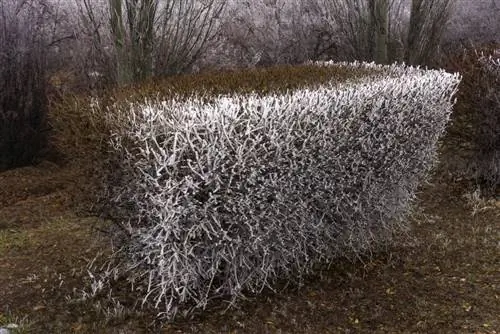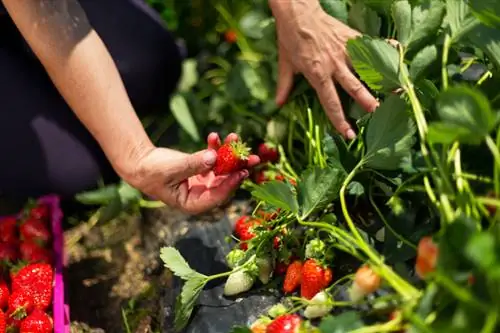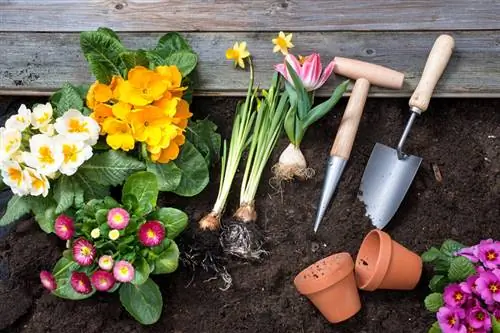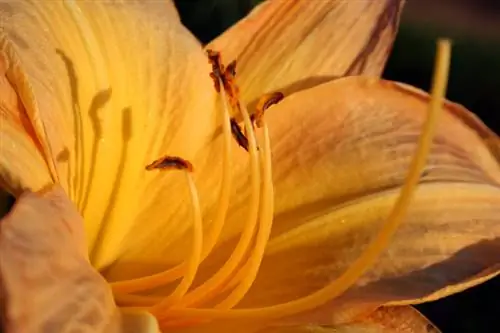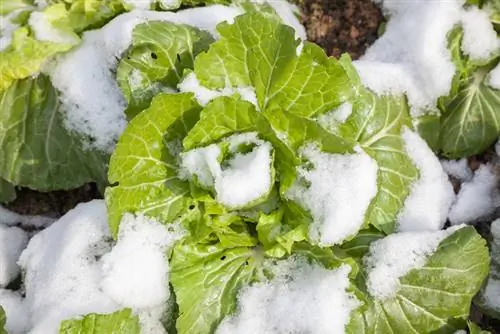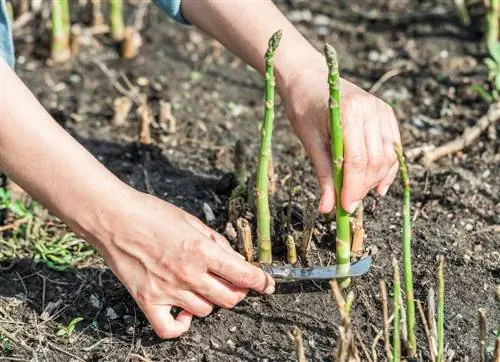- Author admin [email protected].
- Public 2023-12-16 16:46.
- Last modified 2025-06-01 06:02.
Secateurs are the most important tool when caring for barberries. Only a regular cut guarantees a well-groomed appearance. These instructions are aimed at all beginners who want to achieve the perfect shape and maintenance of a barberry hedge. Practical tips on the ideal time and expert cutting show how it's done.

How do I trim a barberry hedge correctly?
To properly prune a barberry hedge, choose the ideal time after flowering for topiary pruning, after planting for planting pruning and in winter for rejuvenation pruning. Wear protective clothing and use clean tools. Cut the shoots evenly and in a trapezoid shape for optimal growth.
Choose a time carefully - tips for the ideal appointment
The desired result of pruning a barberry hedge largely determines the choice of date. The following overview tells you the best times for pruning care:
- Topiary pruning for a well-groomed appearance: after the flowering period
- Planting pruning for strong branching: immediately after planting in spring or autumn
- Rejuvenation pruning of an old hedge: in January/February on a frost-free day
The recommended dates apply to both evergreen and deciduous Berberis species.
Preparation - tips for a smooth process
The following recommendations are aimed at protecting gardeners and hedge plants at the same time. The long, strong thorns pose a significant risk of injury. The use of unclean cutting tools provides an ideal target for numerous plant diseases.
- Put on thorn-proof gloves with cuffs and protective goggles
- Clean cutting tool with hot water and disinfect with alcohol
- Sharpen blades
It is extremely annoying to sweep up and dispose of clippings under a thorny barberry hedge. You can make this work noticeably easier by spreading out foil, old blankets or curtains in advance to catch fallen shoots.
Instructions for cutting - how to cut sour thorn correctly
Barberries make life easy for the gardener because they are extremely easy to cut. Beginners in hedge trimming will appreciate that Berberis branches sprout happily even from old wood. The following instructions explain in practical terms the correct way to cut a barberry hedge:
- First step: thoroughly check the hedge for nesting birds in order to reschedule if necessary
- Tighten out all dead shoots
- Cut inward-facing and bald branches at the base
- Short all branches evenly by up to a third
- Ideally, cut each shoot individually just below a leaf node
The perfect cut aims for a trapezoid shape. If your barberry hedge gets wider from top to bottom, you've done everything right. This shape guarantees that sunlight penetrates into all regions of the hedge bushes so that fresh leaves sprout there.
Radical cut turns back time - tips for rejuvenating cuts
Have you inherited an old, aging barberry hedge or neglected to prune it for a few years? Then breathe new life into the bushes with a radical pruning. For good reason, the Federal Nature Conservation Act specifies winter as the only permitted time. Cut back all branches by up to two-thirds. As long as at least one or two sleeping eyes remain on the shoot, the way is clear for renewed growth.
Tip
The clippings from a barberry hedge are far too good to be disposed of carelessly. Annual, non-flowering head shoots 10 to 15 centimeters long are the perfect cuttings. Remove the leaves from the lower half of the shoot and place the offshoot in a pot with lean, slightly moist substrate.

